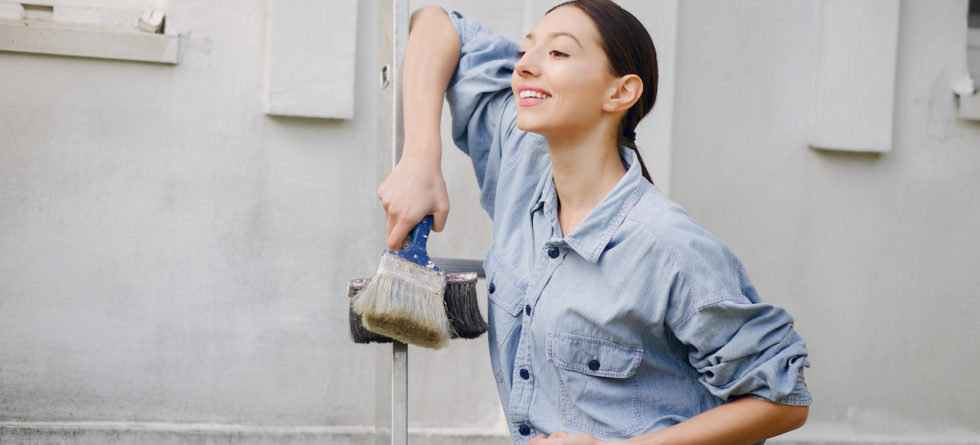Whether it’s better to roll or spray exterior paint depends on various factors, including the size and type of the project, desired finish, surface texture, and personal preference. Both rolling and spraying have their advantages and disadvantages…
Rolling Exterior Paint
- Control – Rolling allows for greater control over the application, making it suitable for detailed work, such as cutting in along edges, corners, and trim.
- Coverage – Rolling can provide more consistent coverage, especially on rough or textured surfaces, ensuring that paint gets into crevices and gaps.
- Cost-Effective – Rolling typically requires less equipment and setup compared to spraying, making it more cost-effective for smaller projects or DIYers.
- Minimal Overspray – Unlike spraying, rolling produces minimal overspray, reducing the risk of paint drifting onto unintended surfaces.
Spraying Exterior Paint
- Speed – Spraying is faster than rolling, covering large areas more quickly and efficiently, making it suitable for large-scale projects or smooth surfaces.
- Smooth Finish – Spraying can achieve a smoother finish with fewer brush or roller marks, providing a more uniform appearance, especially on flat surfaces.
- Accessibility – Spraying can reach areas that are difficult to access with a roller, such as eaves, peaks, or intricate architectural details.
- Thinner Coats – Spraying allows for thinner coats of paint, which can result in faster drying times and better adhesion, especially on surfaces with complex textures.
The best approach depends on the specific requirements and constraints of the project. For example, spraying may be preferred for large, smooth surfaces, such as siding or fences, where speed and efficiency are crucial. In contrast, rolling may be more suitable for smaller projects, detailed work, or surfaces with rough textures.
It’s also worth considering that a combination of rolling and spraying may be optimal for some projects, depending on the scope and requirements. You might use a sprayer for the main body of the house and a roller for trim, corners, and other detailed areas.
Before deciding on a method, consider factors such as surface preparation, weather conditions, equipment availability, and your level of experience to ensure a successful paint job.


Leave a Comment